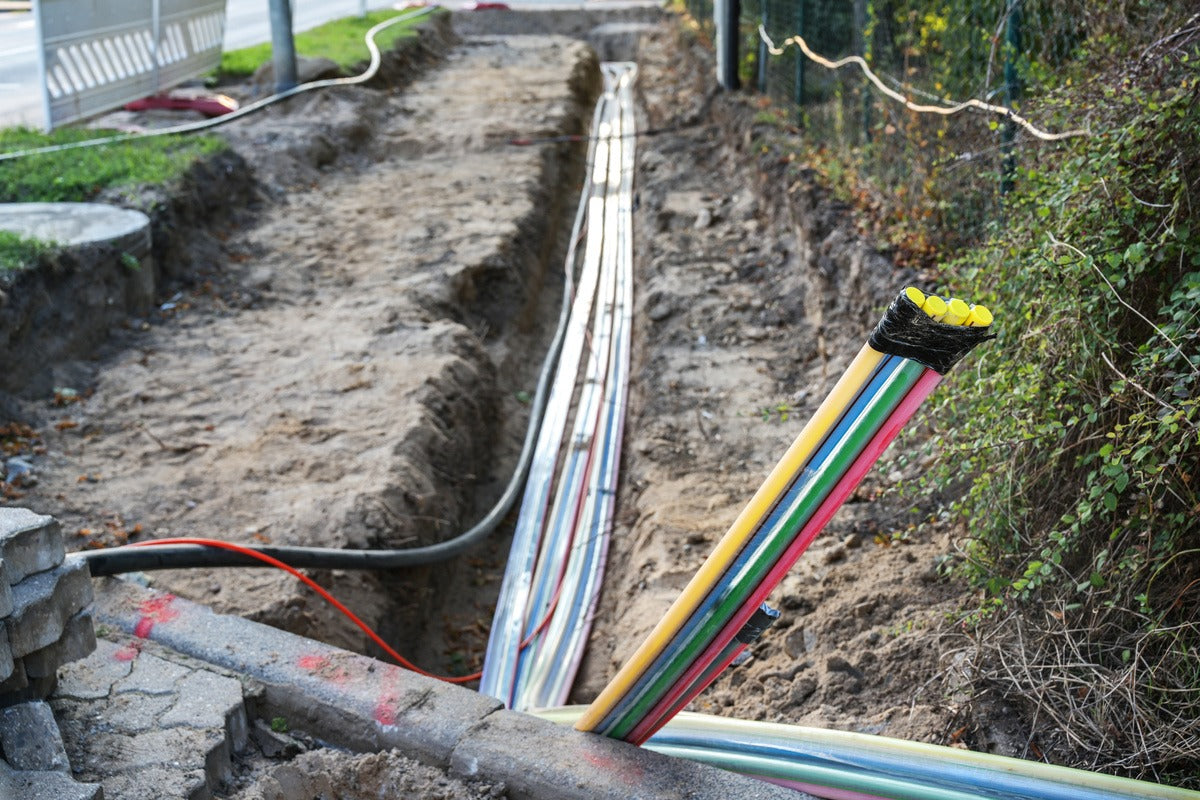Pros and Cons of Underground Fiber Optic Cable

As technology and internet usage advance, so does the way we transmit data. Fiber optic cables are now the gold standard for sending information quickly and securely. While many communities have opted to use aerial fiber optic cables, running fiber optic cables underground has its own set of pros and cons.
Pros of Underground Fiber Optic Cables
There are several advantages of using underground fiber optic cables.
1. Less likely to be damaged by above-ground elements
Since the cables are buried underground, they are less likely to be damaged by adverse weather conditions or wildlife. You won't have to worry about the cable being blown down in a storm or chewed by wildlife.
2. Out of sight
Another benefit to using underground fiber-optic cables is that they are out of sight and not an eyesore. You can place them discreetly along your curb or property line, and no one will ever know they're there.
3. Use less space to place them and get the connection needed
Since the cables are buried underground, you can use less space to place them and still get the connection you need. This can be a significant advantage if you live in a tight space.
Cons of Underground Fiber Optic Cables
While there are many advantages to using underground fiber optic cables, there are also a few drawbacks to consider.
1. Significantly higher initial cost
The biggest downside of underground fiber-optic cables is the significantly higher initial cost. On average, underground fiber optic installation ranges from $1-$6 per foot, depending on the fiber count. This can be a deterrent if you are on a tight budget, have a long driveway, or large property.
2. Complicated to install
Installing underground fiber optic cables is also messier and more complicated than installing them aerially. You will need to excavate and bury the cables, which can be time-consuming and challenging. You’ll need to have a skilled technician do the job, adding to the overall cost.
3. Risk of cable being damaged due to excavations
Underground fiber optic cables are also at risk of being damaged during future excavations. If you are doing any construction or renovations on your property, the cables could be accidentally damaged. This can be an expensive mistake and lead to frustrating and time-consuming repairs.
4. Expensive to repair
If a cable is damaged or stops functioning properly, it can be expensive to repair. You will need to excavate again to get to the damaged cable and then repair or replace it.
With the average cost of burying a fiber optic cable in a rural area costing $75,000 on average, repairing it can be a costly ordeal.
5. Not all locations/terrain can have underground cables
While it is possible to bury fiber optic cables almost anywhere, your location or terrain plays an important role in whether it's feasible to bury the fiber optic cables. For example, if you live in a rocky area, undergrounding the cables will nearly be impossible, while having a lot of trees on your property might lead to blockage. It's essential to take all of these factors into account before deciding whether or not to bury your cables.
Protect Underground Fiber Optic Cables from Digging Animals
If you know where your fiber optic cables are buried and notice wild animals or pets digging nearby, take proactive measures before it's too late. You can use a dig defense animal barrier to keep dogs, armadillos, rabbits, etc. from digging too close to your fiber optic cables.
Utilize Critter Guard Products to Protect Aerial Cables
Underground fiber optic cables have several advantages over their aerial counterparts, but they have several drawbacks to consider as well. Before making a decision, it's crucial to weigh the pros and cons of each option and see what works best for your needs.
If you have already installed aerial fiber optic cables, protecting them against damage from rodents, squirrels, and other critters is essential. Critter Guard offers a variety of products to keep your aerial cables safe, including the pole guards and line guards, which act as barriers to keep animals from reaching the cables. For more information, contact us today to learn more about Critter Guard and how we can help protect your overhead power lines!
Critter Guard is an Amazon Associate, which means we may receive a small commission if you make a purchase using those links in this post. We appreciate the coffee money!
- Choosing a selection results in a full page refresh.


